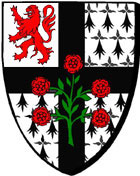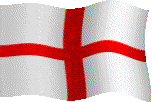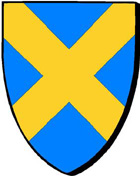
Encyclopédie Marikavel-Jean-Claude-EVEN/Encyclopaedia/Enciclopedia/Enzyklopädie/egkuklopaideia
 |
|||

England Bro-Saoz |

|

Hertfordshire Bro-Hertford |
|
Saint Alban's Verulamium |
| Pajenn bet digoret e 2001 | Page ouverte en 2001 |
* forum du site Marikavel : Academia Celtica |
Dernière mise à jour 01/06/2025 20:01:30 |
![]()
|
Définition / Displegadur : Ville d'Angleterre; comté d'Hertfordshire; sur la rivière Ver, à 19 km d'Hertford, sur la route de Londres à Birmingham. Capitale de la cite bretonne, puis britto-romaine, des Catuvellauni. * Population : 5000 hab. en 1863 |
|
![]()
Histoire. Istor Cette ville a joué pendant un demi-siècle environ, avant la conquête romaine le rôle de capitale de Bretagne, en qualité de capitale de la tribu dominante, les Catuvellauni, dont les rois les plus connus, du fait qu'ils ont été confrontés aux Romains, ont été Cassivellaunos, et Cunobelinus. Ce sont les deux princes Catuvellauni, Togodumnos et Caratacos qui, par leur turbulence au nord des Gaules et leur annexion forcée du territoire des Atrébates britanniques, provoquent l'intervention romaine en Île de Bretagne, marquant ainsi le début de la conquête romaine de l'Île toute entière. Après sa destruction et son anéantissement lors de la grande révolte de Boudicca, et la confirmation de Londinium / Londres en tant que capitale romaine de la Bretagne, Verulamium est définitivement reléguée au niveau de chef-lieu de civitas des Catuvellauni, et ne fera plus parler d'elle spécifiquement durant la période britto-romaine. ******* C'est dans cette ville qu'aurait été empoisonné Uther Pendragon, frère d'Ambroise Aurèle et père d'Arthur. Cet argument permet de démontrer qu'à l'époque d'Uther, 470-472, vu la proximité des sites, Cair Lunden / Londres était bien encore capitale de Bretagne.
*** |
![]()
|
Étymologie / Gerdarzh. A. Verulamium. * Rivet & Smith, p. 497-98 : VERULAMIUM SOURCES - Coins of Tasciovanus, who ruled from about 20 b.c. to about A.D. 10, have the legends VER, VERL, VERO, VERLAMIO and VIR (Mack Nos. 152-92 passim). - Inscription : A monumental inscription of the governorship of Agricola, A.D. 79, was found in fragmentary state in 1955, and published in JRS, xxxvi (1956), 8-10 (also Burn, 1969, No. 40, pp. 39-40). In line 6 there survives VEI : 'from the letter which follows VE there remains a vertical with the left portion of two serifs. Either L or R is readable, so VEI may be part of CIVITAS CATU]VEL[LAUNORUM] or RES PUBLICA] VER [ULAMIENSIUM] or MUNICIPIUM] VER[ULAMIUM].' The last version is that quoted by several authorities, including Frere, Britannia2 (1974), 232. - Tacitus, Annals, XIV, 33 : MunicipioVERULAMIO (dative) - Ptolemy II, 3, 11 : Ourolanium ( = UROLANIUM), a. polis of the Catuvellauni - AI 4713 (Iter II) : VEROLAMIO - AI 4768 (Iter VI) : VEROLAMI - AI 4798 (Iter VIII) : VEROLAMO - Ravenna 10650 (= R&C 96) : VIROLANIUM The name is recalled by Gildas (II), in connection with the martyrdom of St Alban in A.D. 286 : he calls the saint adjectivally Verolamiensem (acc.), with many vars. (see Chapter II). In connection with the same martyrdom Bede also knew the name through ecclesiastical tradition : Passus est autem beatus Albanus ... iuxta civitatem Verolamium, quae nunc a gente Anglorum Uerlamacaestir sive Uaeclingacaestir appellatur (I, 7). The sources show, then, Ver- on the whole, with Vir- among the early coins when, in writing British names for the first time, some uncertainty about Latin letters was natural. Ravenna's Vir- is probably of little account ; it might be accidental, or an unconscious assimilation to British Viroconium and numerous Continental names having Viro-. Records with the second vowel -o- may state a genuine variant (already present in the coin-legends), or in later instances may show the Vulgar Latin development û > o (as in Camoloduno AI 48o,4, Eboracum, etc.). Ptolemy's form is curious. Müller indicated that one should read for it Ouerolamion (= VEROLAMIUM), but it is worth noting that a reduction of Celtic * Uer- to *Ur- in initial position can take place (see VIROCONIUM), so that Ptolemy may be recording a genuine phonetic variant. It seems safe, on balance, to take the tradition Verulamium as the correct Romano-British form. DERIVATION. This has been much discussed, without a consensus emerging. Jackson after analysing opinions in Britannia, I (1970), 80-81, thinks the name 'unsolved'. R&C's proposal of *uer- intensive prefix plus *lamo- *ulamo- ' slimy ' is not satisfactory on various grounds, especially (Jackson) that this word is not documented in Celtic. Similarly Jackson rules out a formation *Uerulamion based on a personal name *Uerulamos 'broad-hand ' (*ueru- ' broad ' plus *lama 'hand '), partly because Celtic *ueru- is undocumented, partly because Anglo-Saxon Werlame- could not have derived from a British name having -a- (but -a- could have been retained by Latin influence ? -see the forms of Gildas and Bede). The coin evidence is inconclusive, since although it shows Ver (suggesting a first element) it also shows Vero. It seems however that we should retain the possibility of a British *ueru- 'broad'. With some doubt, Ellis Evans in GPN 124 thinks it could have existed, citing cognates in Sanskrit uru 'wide, far' and Greek eurus. Some such element needs to be postulated in order to explain the personal names with *ueru- and not *uer-, which are certainly Celtic, such as Verucloetius perhaps ' far-famed '. In toponymy the only parallel is Verulani, an oppidum in the region of Rome mentioned by Pliny NH III 64. See also, perhaps, the previous entry. The Belgic site is large and too diverse in topography for this to be called in with hints about the meaning of -lam-. Possibly both elements were very ancient ones, still used traditionally in name-formation but no longer present in the spoken languages of post-Roman Celtic Britain when written records began. IDENTIFICATION. The Roman city on the west side of St Albans, Hertfordshire (TL 1307). The status of the place is disputed. That Tacitus is using the term municipium in its technical sense is made probable by the fact that in the sarne chapter he has remarked that London did not hold the title of colonia, though he may have been writing anachronistically. The text of the inscription is uncertain (see above), but a further indication that the town did achieve municipal rank is the absence of a tribal suffix in any of the itinerary references, and perhaps the erection in it of two commemorative arches. On the other hand the Catuvellauni, of whose civitas it should be the capital, continue to be referred to as such (RIB 1065, 1962), and not as Verulamienses. On the complicated questions surrounding the legal status of such communities see A. N. Sherwin White, The Roman Citizenship (2nd edn, Oxford, !973) > Chapters XIV and XV. Note. It was the Anglo-Saxon Vclingas, referred to by Bede, who gave their name to Watling Street (Anglo-Saxon Wclingastrt). Originally it described only the Roman road from London to St Albans, and the extension of the name to other Roman roads in England was a later development. B. Saint Alban's. * Eilert Ekwall, p. 399 : "aecclesia sancti Albani 792 BCS 264; sancte Albanes stow 1007 Crawf; Villa S. Albani DB; (aet) Sancte Albane 1116 ASC (E). Self-explanatory. The brit name of the place was Verulamium Tac., &..., whence Uerlamacaestir c 730 Bede, Werlameceaster c 890 OEBede. Another early name was Uaeclingacaestir, Bede, Waeclingaceaster OEBede, Waetlingaceaster 990 KCD 672. This name means 'the Roman fort of the Waeclingas' (or 'Wacol's people)." * A.D. Mills, p. 401 : "Sancte Albanes stow 1007, Villa Sancti Albani 1086 (D.B). Holy Place of St Alban, from the saint martyred here in AD 209. The early spellings contain OE stow 'holy place' and Latin villa 'town'. ---------- * J.-C. Even : Saint-Alban's / Saint-Alban's Abbey tire son nom d'un certain, Alban, britto-romain chrétien martyrisé en cet endroit (datation discutée) voir Alban de Verulamium Wikipédia |
![]()
|
Formes bretonnes anciennes / Stummoù henvrezhoneg : * Geoffroy de Monmouth : * Nennius : Cair-Mencip (Nennius, Historia 66a3) : Cair Mincip. * Jesus Collège : |
![]()
|
Sources; Bibliographie / Eien; Levrlennadur : * M.-N. BOUILLET : Dictionnaire Universel d'Histoire et de Géographie. Hachette. Paris. 1863 * Eilert EKWALL : The Concise Oxford Dictionary of English Place-names. Clarendon Press. Oxford. 4è édition. 1980. * John MORRIS : Nennius. British History and the Welsh Annals. Phillimore. Chichester. Sussex. 1980. * A.L.F RIVET & colin SMITH : The Place-Names of Roman Britain. Batsford Ltd. London. 1979/ 1982. * A.D. MILLS : Oxford Dictionary of British Place Names. Oxford University Press. 1991 - 2003 - envoi de ** |
![]()
Liens électroniques des sites Internet traitant de Saint-Alban's / Verulamium : * lien communal : Conseil municipal et de district de St Albans * Wikipedia : Alban de Verulamium Wikipédia * autres sites privés : http://www.roman-britain.org/places/verulamium.htm http://www.stalbans.anglican.org/ * pajenn Wikipedia brezhonek : https://br.wikipedia.org/wiki/Deal_(Kent) * forum du site Marikavel : Academia Celtica * Autres pages de l'encyclopédie Marikavel.org pouvant être liées à la présente : http://marikavel.org/heraldique/bretagne-familles/accueil.htm http://marikavel.org/broceliande/broceliande.htm * solidarité nationale bretonne avec le département de Loire Atlantique : Loire-Atlantique * sauf indication contraire, l'ensemble des blasons figurant sur cette page ont été dessinés par J.C Even, sur bases de GenHerald 5. * Introduction musicale de cette page : Bro Goz Ma Zadoù, hymne national breton, au lien direct : http://limaillet.free.fr/MP3s/BroGoz.mp3 hast buan, ma mignonig, karantez vras am eus evidout go fast, my little friend, I love you very much |
![]()